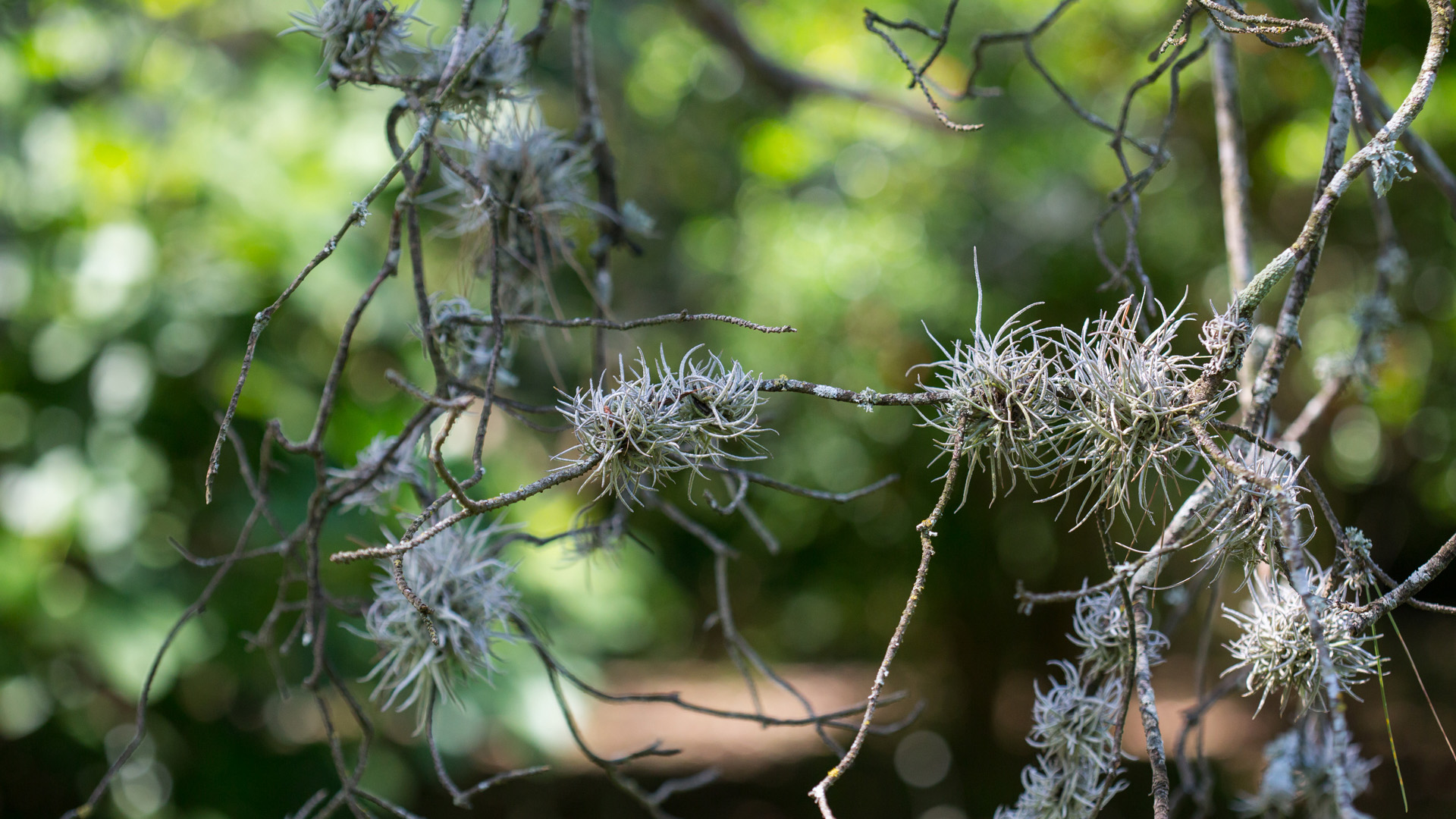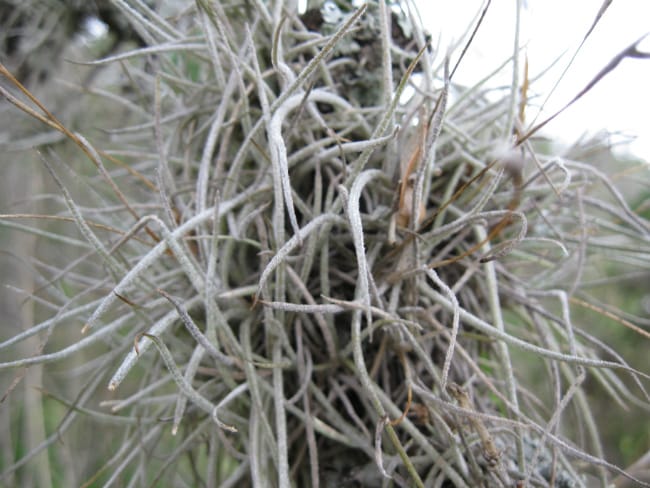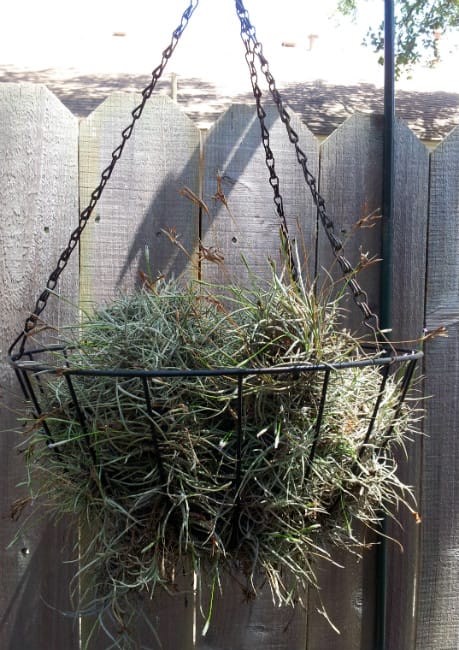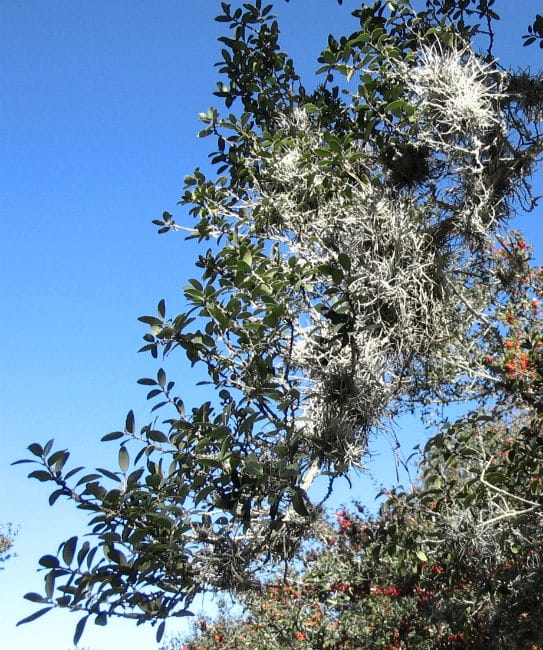Sun or shade. Evergreen, with dull silver leaves growing in a small sphere and found clinging to branches. Ball moss gathers all the nutrients it needs from vapor and air. Contrary to popular opinion, it is not a parasite; it’s an epiphyte, using its tree only for structural support.
Ball moss is a distant cousin of pineapple and belongs to the bromeliad family. It lives where it can find the light, high humidity, and minimal air flow it requires — hence it is especially common on the limbs and branches of live oaks and other dense trees (including clipped crape myrtles.) It’s also common on power lines.
The seeds are spread by wind, and germinate wherever they find a horizontal surface upon which to adhere.



